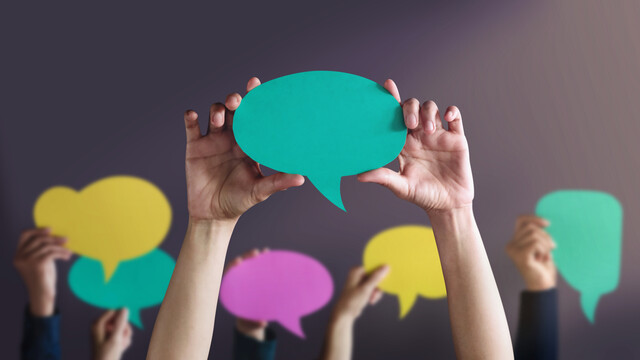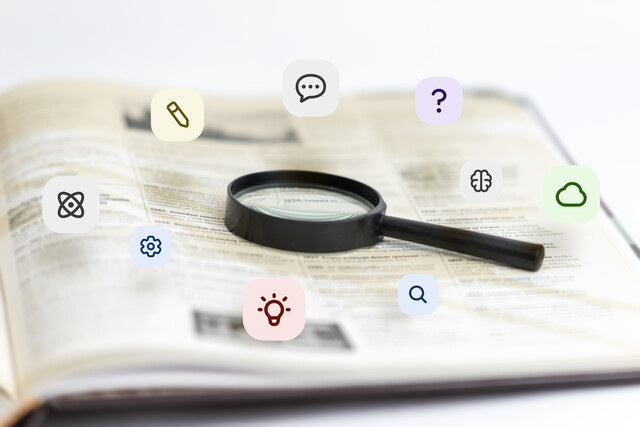Writing e-mails takes time. In fact, a survey by McKinsey Global Institute found that skilled office workers spent an average of 28 percent of their work weeks working on e-mail messages. And that percentage does not take into account any time spent stressing about a difficult message.
As you develop your own style of e-mail writing, it can be helpful to have some basic templates to build upon. A template serves as a pattern or a model for an e-mail. Your e-mail program may have some sample templates you can adapt for your personal use. You may be able to add your signature, your company's logo or other custom illustrations.
Another idea is to comb through your inbox and outbox for trends and similarities among the messages you regularly receive and send. Cut and paste from these messages to create your own e-mail templates.
You can do this by creating a basic format with an introduction (who you are and why you are writing), body (the details of your message) and conclusion (action step and further contact details), with empty slots that can be filled in with specific names and details and any added personal touches you can make. Remember to create a concise subject line to ensure your message is opened.
If you are a real estate agent, and you are sending an update to all your clients, you could add a personal note, such as, "I'll bet you are enjoying your new pool and deck during this heat wave!" or "How are you and your family enjoying spending the holidays in your new house?"
Here are some sample formats for e-mails for other workplace situations you may encounter. Of course, these are templates, and as such, they need to be tweaked for your specific business and your particular situation. Notice that all of them strive to be concise, in an open, readable format and -- most importantly -- "you-focused," rather than "I focused."
Basic follow-up message
Subject Line: Thank you for your ______
Dear ______,
Thank you for taking the time to ______ (meet with me, visit our office, talk with me) yesterday. I enjoyed our conversation and the chance to learn _________ (other specific details here).
Please let me know if you need any more information. Thank you again, and I hope to hear from you again in the near future.
Best regards,
Your name
Takeaway tips
-
In most cases, you should send this e-mail within 24 hours of the meeting.
-
Be specific and personal with details.
-
Be brief.
Basic welcome message
Subject Line: Welcome to our team!
Dear ______,
Welcome to ______ (your team name)! We are excited to have you join us, and we hope that you will enjoy _______ (working with our company).
Attached is our ______ (newsletter, handbook, catalog, etc.) that features more information about what it means to be a _____ (team member).
Please let me know if you have any questions now, or in the future. I will be happy to help you or put you in touch with the appropriate team member.
Warm regards,
Your name
Takeaway tips:
-
Welcome messages should be upbeat and friendly.
-
Include helpful links or documents.
-
Let recipient know who to contact for more information.
Basic apology message
You missed a meeting. You sent the wrong response. You were late on a deadline. You messed up. Sending an e-mail of apology will go a long way to amending the situation. Use the message to accept responsibility for what has happened and show you value the relationship you have with the recipient.
Subject line: My apologies
Dear _____,
I am writing to apologize for __________. I realize that my actions showed poor judgment. As a ______ (your position) within _______(your department). I know that my actions (specify here) reflect broadly on the entire company.
I value my job and my role here, and I am truly sorry for any problems my ______ (error, lack of judgment) may have caused.
I have already ________ (written to the customer, apologized to another party). Please let me know how I can make further amends.
Sincerely,
Your name
Takeaway tips:
-
Be as specific as possible. This is not a time to be vague and general.
-
Offer an explanation if you can.
-
Share whatever steps you have taken.
-
Offer to do more if needed.
Basic request message
Dear __________,
I am writing to request ___________ (vacation time, letter of recommendation, etc.) for _______ (reason) on __________ (dates, if applicable).
I appreciate your consideration and assistance with this request. Please let me know if you need any other information.
Sincerely,
Your name
Take away tips:
-
If you are asking for time off, assure the recipient that your work will be current before you leave.
-
Include contact details for a letter of recommendation, including why you need it, where to send it, and when you need it.
-
Be brief and courteous.
You want to follow up with a boss or supervisor.
Subject Line: Follow-up on ______ (your task)
Dear _________,
I wanted to update you on my progress on my _______ (progress, research) since our meeting last week.
I believe our best two options are ________. Both options meet the criteria we discussed and will save us money over our current providers.
I will have full details and comparative data ready for your review at Friday's meeting. Please give me a call if you have any questions in the meantime.
Respectfully,
Your name
You would like an introduction to someone.
A business acquaintance knows someone who can help you with a project. You would like an introduction. Here's a template for the request.
Subject line: Introduction to [name] for [1-2 words describing your reason]
Hi ______,
I hope you are well. I'm reaching out to you directly because I've been working on (describe job or current project) and I noticed you are connected with [name] on LinkedIn. Could you possibly introduce us for [your reason]. I would really appreciate your help on this.
I have pasted a blurb about my project below to provide context for the introduction. If there is any other information you think would help, please let me know. I appreciate your help!
Kind regards,
Your name
Blurb here (1-2 lines about you and your project)
Takeaway tips
-
Make these requests sparingly, so as not to annoy the recipient.
-
Include a brief blurb to make the introduction quick and easy.
You've been asked to make an introduction
Now, let's look at it from the other side. How do you respond to a request for an introduction? The first step is to check with your contact for permission.
Here's a template to accomplish this task easily.
Subject Line: May I introduce you to a contact?
Hi _____,
A _________ (colleague, friend, student) of mine named ___________ asked me for an introduction to you. I thought it could be a useful connection for you because ________ (you share an interest in _________or you both work in _______ ). Here is a blurb about her/him.
Out of respect for your time, I wanted to run it by you first. Please let me know if I may introduce you both.
Thanks,
Your name
Takeaway tips
-
Only make introductions between contacts if you feel comfortable doing so. It is okay to say no.
-
Always ask permission.
-
Be brief.
A stranger has asked you for advice/information.
None of us would be where we are today without our mentors. Of course, it is a good idea to meet with people who seek career advice or information from you. If these requests are taking you away from your work or downtime, however, you may need to set some boundaries.
Here is a suggested template:
Dear _____,
Thank you for your e-mail and your kind offer a meeting for coffee. I enjoy talking with people about how to get started in _______ (your area of business). My schedule is quite busy, but I would enjoy talking with you by phone. I have a 20-minute slot available on _____ or _______(suggest two days/times).
Would either of these options work for you?
Kind regards,
Your name
Takeaway tips
-
Offering a phone call is a way to saying "yes," without it turning into an hour meeting.
-
Be brief.
-
Make a specific suggestion.
You don't know what the sender wants.
In an effort to be brief, or just out of carelessness, some business associates may send you an e-mail that asks you to respond without offering you enough information.
If, after re-reading the original message a few times, you still do not know how to respond. Here is a basic e-mail to use:
Dear _____,
Thank you for your e-mail. Would you please give me a little background information on ______? Once you send that over, I will be better able to respond to your request.
Thank you!
Regards,
or
Dear ______,
Thanks for your e-mail. Am I correct in assuming that you would like me to ______? I just wanted to make sure we are on the same track before I proceeded with working on this request.
Thank you!
Regards,
Your name
Takeaway tips:
-
Send this response quickly so time is not wasted.
-
Avoid blaming the sender for the confusion.
-
Be brief.
You want to say "no" to a work-related request.
We've all been there. A co-worker is swamped and asks for your help with a project. A business acquaintance needs you to step in to fix something. A friend of your mom heard you are good at what you do and wants you to help out with a project.
Although you strive to help people out whenever you can, this request comes at a bad time.
Maybe you already have your own pressing workload, or maybe it is the weekend, and you need some much-deserved time off. Saying "no" is never easy, but it can be easier if you have a go-to e-mail template.
Hello ______,
Thank you for your note. I am flattered that you have asked for my help. I need to say no, however, because my workload is already quite full. (If you have specifics, such as, "I am working on the so-and-so project and I have a tight deadline, you can add them here.)
I would like to offer my support in a different way. (Here you can add a few quick tips, a link to a helpful website or possibly a referral or personal introduction to someone else who might be able to help.
Good luck with your project.
Kind regards,
Your name
Takeaway tips:
-
Keep your "no" e-mails brief.
-
Don't over explain.
-
Offer an alternative, if you can.
-
Don't feel guilty. You have to say "no" to some things in order to say "yes" to other better things.
You want to suggest a change to a co-worker.
Let's say you have come up with a way to streamline a group project. You want to share your time-saving ideas with the other team members, without seeming pushy. Here's a template:
Hi ______,
I was thinking about our project over the weekend and I have a few thoughts on how we might simplify the process. I think it may save us some time and it may even help us achieve a better result.
Would you have some time to meet today? I would love to share my plan with you over a cup of coffee. I am free after 2 p.m. What would be a good time for you?
Thanks!
Your name
Takeaway tips
-
Use a respectful, positive tone.
-
Suggest a time to meet face to face.
When you revise an e-mail template to fit your particular needs, be sure to consider the perspective of the person who will read it. Read your e-mail over carefully (following our proofreading rules) to make sure it makes sense.
It would be embarrassing, for example, if you left in a ______ or the words "your name" from a template. Using a template can be a convenient way to streamline your frequent correspondence. However, it is still critical that you take the time to treat each message with care and personal attention.



























